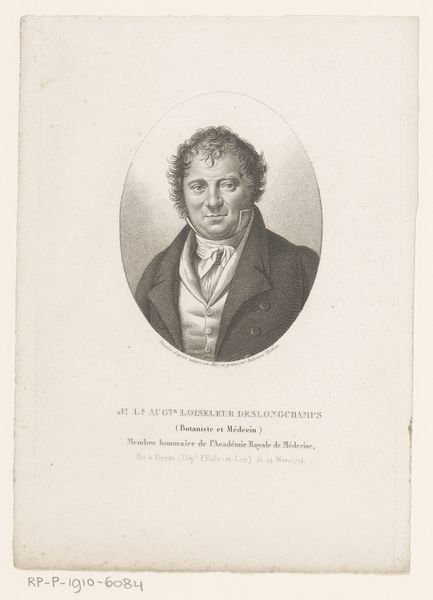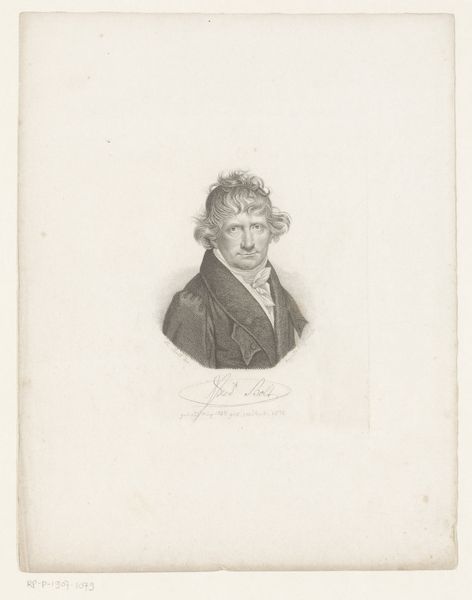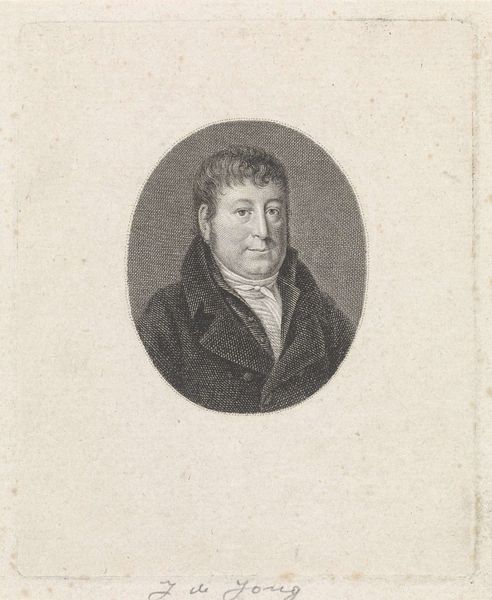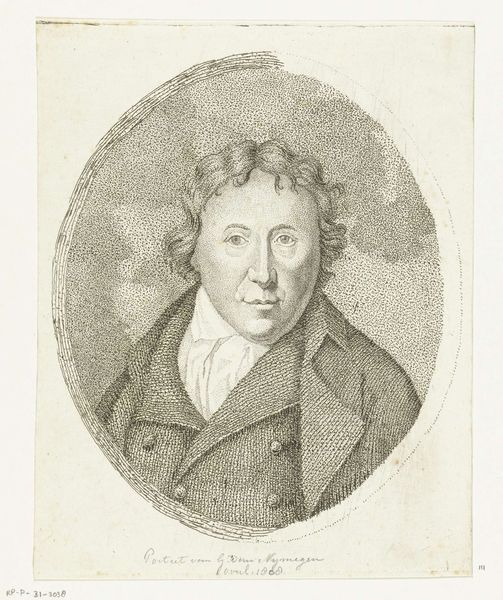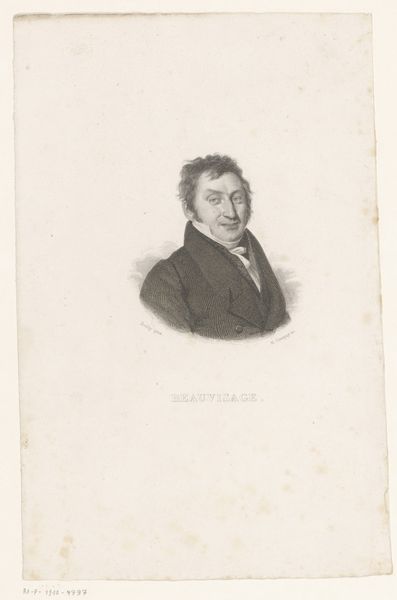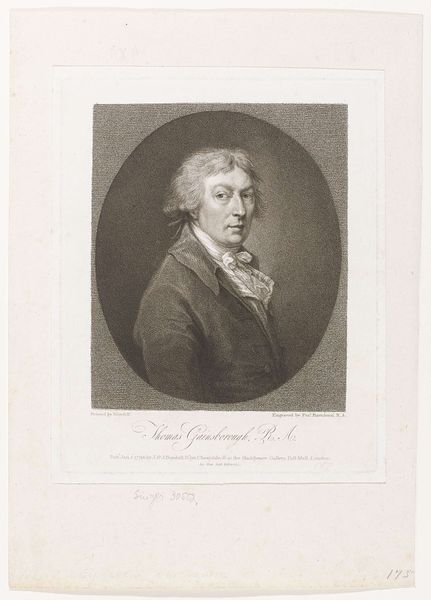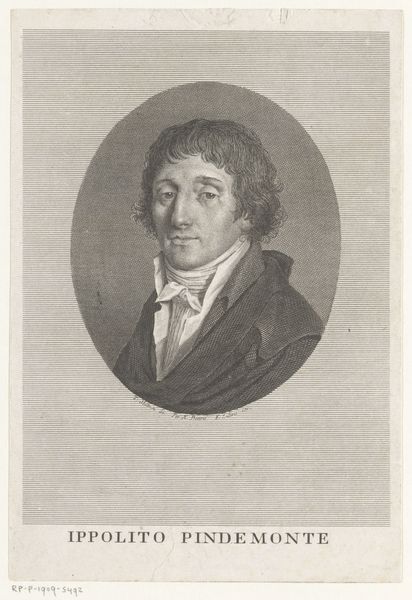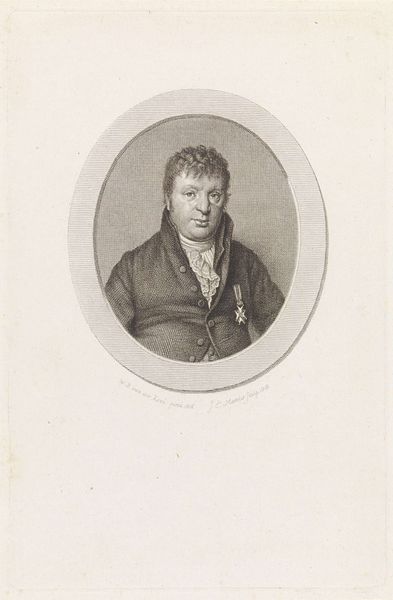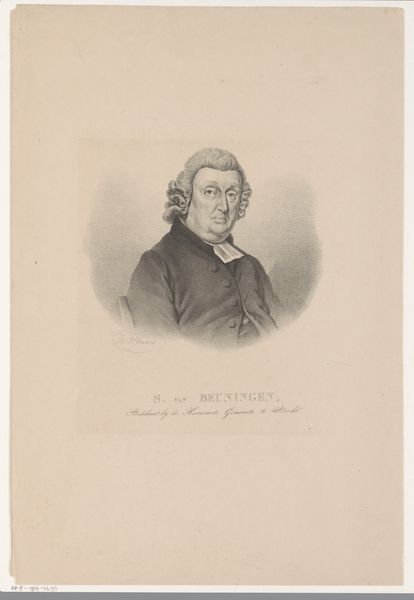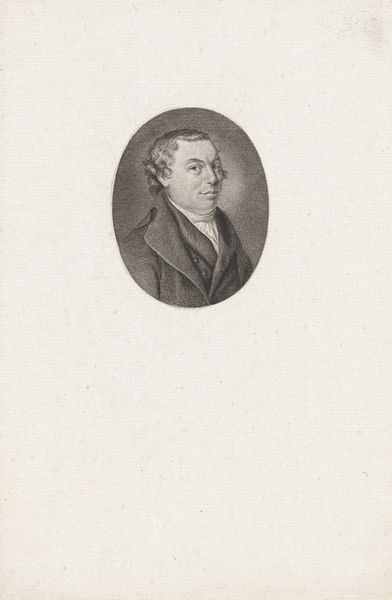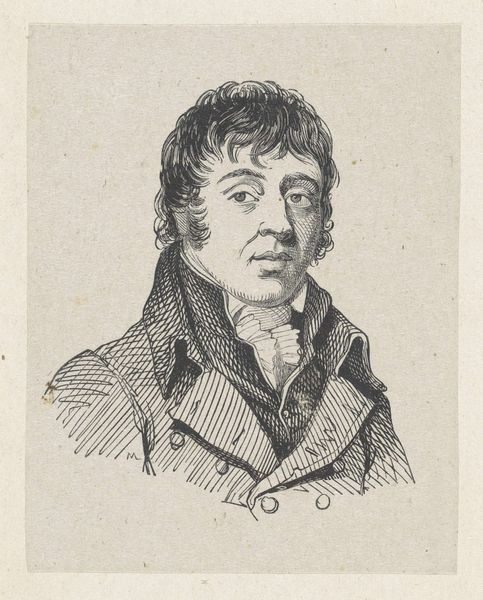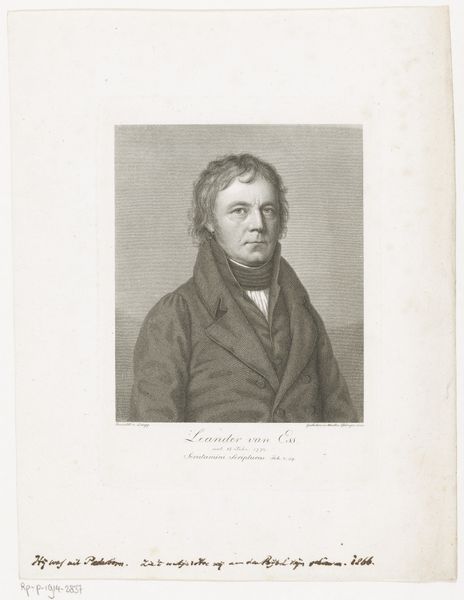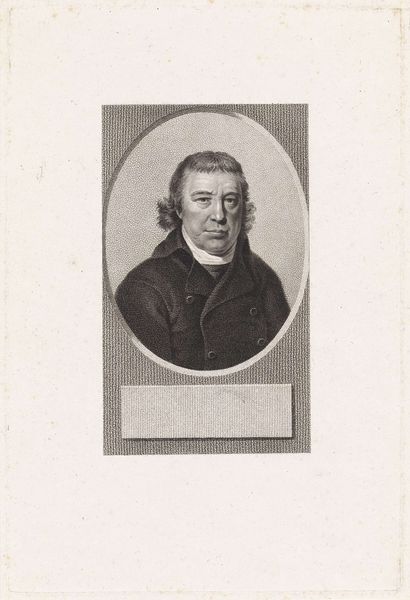
drawing, engraving
#
portrait
#
drawing
#
engraving
#
realism
Dimensions: height 256 mm, width 151 mm
Copyright: Rijks Museum: Open Domain
Curator: Here we have "Portret van Jacob van Haeften," an engraving dating back to 1826, currently held at the Rijksmuseum. Editor: My first impression? There's an austerity to it, almost clinical, in the subject's direct gaze. The monochrome rendering strips away any potential for flattery, presenting us with what seems to be an unvarnished depiction. Curator: Precisely. The medium, engraving, lends itself to such starkness. Note the artist's meticulous labor in the hatching and cross-hatching to build form and shadow, the marks forming an image to give an impression. It's realism striving for accuracy in a burgeoning era of industrial reproduction, think of early photography trying to capture likeness. Editor: The stark tonal contrasts guide my eye immediately to the face, meticulously modeled, set against the relative emptiness of the surrounding space. It's a formal trick, a way to hold the viewer captive, demanding careful consideration. It also draws my attention to the almost theatrical quality of light—very deliberate in sculpting the facial features. Curator: Absolutely. Think about who might have commissioned this work, and why choose engraving, given its connection to mass production and dissemination of images? Was it a tool for social climbing, and asserting position within the community? It is definitely playing to a particular type of Dutch society. Editor: A society meticulously documented! And yet, observe how the rigid composition—the formal pose and symmetry—somehow undermines any claims to spontaneity. Everything seems highly calculated, designed, even stilted. The figure is presented within such tight constraints to suggest perhaps self-important, but yet confined. Curator: True, but consider the social function. Portraiture, even in reproducible form, was about cementing status and portraying a controlled image, showing social stability. An individual like Van Haeften might want to use this kind of print for sending around to his wealthy networks to reinforce shared power structures. Editor: I concede. By dissecting its visual mechanics, its deliberate play of light and shadow, and understanding the materials chosen and the production processes, we uncover a deeper dialogue, about the subject and social standing, depicted in that period. Curator: And hopefully, some fascinating points of context too, revealing an intent with what society wanted from that kind of art form.
Comments
No comments
Be the first to comment and join the conversation on the ultimate creative platform.

